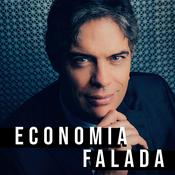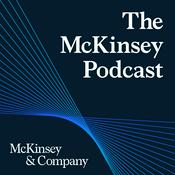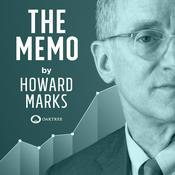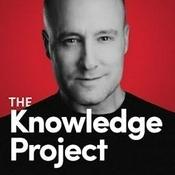Episódios Disponíveis
5 de 554
- California’s grid under pressure: affordability, AI, and the future of electricity marketsCalifornia is often described as the state where you can see the future of the US, and of the world. That has certainly been true in terms of some of the problems faced by the electricity grid. California has been grappling with the impact of wildfires and a big shift to renewable generation, and now faces the prospect of rising power demand from electrification and data centers.In this episode, host Ed Crooks and regular guest Amy Myers Jaffe of NYU talk to Elliot Mainzer, President and CEO of the California Independent System Operator (CAISO), to dig into how the state is tackling those challenges.California’s electricity prices have nearly doubled in eight years, rising to about 32 cents per kilowatt hour for residential customers. Affordability has become a political flashpoint, as it has in many other parts of the US, and other countries around the world. Elliot explains how CAISO is using reforms of transmission planning and interconnection queues to help “bend the cost curve” downwards.The discussion also covers an important shift that is now under way in western power markets. Governor Gavin Newsom of California recently signed AB 825, advancing an independent regional governance structure for the emerging extended day-ahead market. Elliot outlines how implementing the new law could change reliability, capacity planning, and resource adequacy across 11 states.Another pressure point is AI, and the data centers needed to support it. While large load growth in California is more modest than in some other states such as Texas or Virginia, the state still expects 2.3 gigawatts of new data center demand by 2030. Ed and Amy question how much flexibility these data centers can provide, whether price pressure is pushing hyperscalers elsewhere in the US, and how CAISO will manage the all-important issues around siting and grid integration.The episode also dives into one of California’s most contentious debates: the role for distributed energy resources and virtual power plants. Elliot discusses what CAISO can see, what it can’t, and what needs to change for DERs to support affordability and reliability—while highlighting the remarkable performance of the state’s battery fleet in avoiding Flex Alerts for the past three summers.Finally, the conversation looks ahead to California’s longer-term energy future. The state has set an ambitious energy goals, including sourcing all its electricity from zero-ccarbon generation by 2045. To achieve that, many gigawatts of new renewables are still required, and wide-area coordination across the western US will have to live up to its full potential. As Elliot puts it, managing this grid is challenging, but “the challenge is energizing.”Stay tuned to The Energy Gang as we continue tracking the forces that are reshaping the power industry, from technology and finance to policy and climate.See Privacy Policy at https://art19.com/privacy and California Privacy Notice at https://art19.com/privacy#do-not-sell-my-info.--------44:16
- What happened at COP30? The key points on cutting emissions, adapting to a warming world, and raising the finance to pay for itThe COP30 climate talks in Belem wrapped up over the weekend, and reactions to the outcome were sharply divided. Simon Stiell, Executive Secretary of the UNFCCC, said “climate cooperation is still alive…we’re undeniably still in it and we are fighting back.” Others said the COP had been another failure, with a final statement that amounted to “a form of climate denial”.To make sense of what really happened at COP30, and where the talks leave the global effort on climate change, host Ed Crooks is joined by three regular Energy Gang contributors who have been following the negotiations closely. Amy Harder is the national energy correspondent at the news service Axios, Lisa Jacobson is the president of the Business Council for Sustainable Energy, and Simon Evans is deputy editor of the website Carbon Brief. Together they discuss the arguments over COP30’s statement on fossil fuels, the rise of climate adaptation as a key priority, and hopes for increasing flows of capital to lower-income countries.A pledge to triple adaptation finance for developing countries by 2035 is attracting a lot of scrutiny. Lower-income countries are pushing for clear plans for delivery, not just vague aspirations. What could those plans look like? Another key issue is China’s complicated role in the energy transition. It is leading the way in manufacturing and deploying low-carbon energy technologies. But it is still adding coal-fired generation capacity at a rapid pace. Does it make sense to see China as a climate leader?It is a complex picture. The world is still off track for the Paris Agreement’s climate goals, even after the latest round of country pledges on emissions, known as Nationally Determined Contributions. But solar, wind and storage are still on declining cost trends, and are making significant progress in many countries.Finally, Ed speaks with Gianpiero Nacci, who’s Managing Director for Climate Strategy and Delivery at the European Bank for Reconstruction and Development, for a focused discussion on climate finance. Gianpiero explains why multilateral development banks such as the EBRD are being asked to do more, what makes adaptation harder to fund than mitigation, and what the new COP30 to COP31 roadmap means for climate finance, as focus shifts to next year’s meeting, which will be held in Turkey a year from now.See Privacy Policy at https://art19.com/privacy and California Privacy Notice at https://art19.com/privacy#do-not-sell-my-info.--------56:45
- What happened in COP30’s first week? Support for energy efficiency and a status report on methane show which climate initiatives are still making progressNegotiations in the COP 30 climate talks are continuing in Belem, Brazil. The headlines are focusing on the divisions between countries that are shaping this year’s climate talks. But despite the doom and gloom, there are some practical steps being taken to support the transition towards lower-carbon energy. There may be a notable lack of significant new pledges. But making a pledge is the easy part. Implementation is always harder, and that is the focus for COP30.At COP28 in Dubai two years ago, a goal was set to double the pace of global energy efficiency gains, from 2% a year to over 4% a year. Can we hit that goal, and what will it mean if we do?To debate those questions, Ed Crooks and regular guest Amy Myers Jaffe are joined by Bob Hinkle, whose company Metrus Energy develops and finances efficiency and building energy upgrades across the US. Bob is there at the talks in Belem, and gives his perspective on the mood at the meeting. The presence of American businesses at the conference this year is definitely reduced compared to other recent COPs. But Bob still thinks it was well worth him going. He explains what he gets out of attending the COP, why energy efficiency has a vital role to play in cutting emissions, and why he is still optimistic about climate action.Another initiative that came out of COP28 was the Oil and Gas Decarbonization Charter (ODGC): a group of more than 50 of the world’s largest oil and gas companies, which aim to reach near-zero methane emissions and end routine flaring by 2030. Bjorn Otto Sverdrup is head of the secretariat for the OGDC, and he joins us having just returned from Belem.Bjorn Otto tells Amy and Ed that there has been some real progress in the industry. The 12 leading international companies that are members of the Oil and Gas Climate Initiative have reported some positive numbers: their methane emissions are down 62%, routine flaring is down 72%, and there’s been a 24% reduction in total greenhouse gas emissions.There is still huge potential for cutting in total greenhouse gas emissions by curbing methane leakage and routine flaring worldwide. How can we make more progress? Bjorn explains the scale of the opportunity, the real-world constraints, and the growing role of new technology including satellites and AI in detecting leaks. Keep following the Energy Gang for more news and insight as COP30 wraps. Next week we’ll talk about what happed, what was promised, what didn’t happen, and what to expect on climate action in 2026.See Privacy Policy at https://art19.com/privacy and California Privacy Notice at https://art19.com/privacy#do-not-sell-my-info.--------52:49
- The COP30 climate talks are under way In Brazil. What is the point of the conference?COP30, which began this week in Belém, Brazil, marks a decade since the Paris Agreement was adopted at COP21 in 2015. It’s being billed as the “implementation COP”: instead of grand new announcements of international agreements, governments are supposed to be focused on delivering on the commitments they have already made. Host Ed Crooks and regular guest Amy Myers Jaffe welcome back Amy Harder, National Energy Correspondent at Axios. She says not every COP is created equally, and “this is definitely one of those COPs that are more of an ebb than a flow.”But that said, it doesn’t mean COP30 will inevitably be unproductive. Amy Myers Jaffe, who is the Director of NYU’s Energy, Climate Justice and Sustainability Lab, argues that COP30 “could wind up over time being seen as a more successful meeting than people are currently thinking it will be.”Instead of a new comprehensive global framework, the objectives for this year’s talks will be a series of smaller-scale sectoral initiatives: scaling sustainable fuels, tackling industrial emissions, protecting forests, and aligning private capital with policy goals. The Energy Gang also welcomes to the show for the first time Lisa Jacobson, who is President of the Business Council for Sustainable Energy. She joins the show from Brazil to give the boots on the ground view as the conference begins. Previous COPs have generally put the mosh emphasis on government action. Lisa says that a focus on what’s good for business might be a better way to spur change. Clean energy technologies are winning in many markets around the world because they make commercial sense. Policy can be helpful, but is it ultimately the business case that has to be what pushes the energy transition forward? Ed, Amy, Amy and Lisa debate the changes to US energy and climate policy, China’s emissions trajectory, the global impact of EU measures, and how much of the clean energy build-out is now driven by economics rather than politics. And they wonder whether there is a central paradox in global climate policy. If the future of energy will be decided by market forces and national interests, not by anything that happens at COP30, is that a sign that the series of past COPs has been a success? We’ve got more coverage of COP30 coming soon, so make sure you’re following us for all the key news and insight from Brazil. See Privacy Policy at https://art19.com/privacy and California Privacy Notice at https://art19.com/privacy#do-not-sell-my-info.--------48:13
- How are businesses rethinking energy and sustainability? COP30 starts in Belem as climate action faltersCOP30, now getting under way in Belem, Brazil, has been billed as “the implementation COP”, which means a focus on governments taking real steps to achieve the goals of the Paris Agreement. We will be examining all the key issues for government negotiators in the talks very soon. But for this show, we are looking at the role of business. At New York Climate Week in September, the discussion was all about how businesses are facing up to the challenges of meeting growing demand for energy while also curbing emissions. With the rise of AI and broader electrification trends driving up power demand in some places at rates not seen for decades, sustainability goals are under pressure. Will companies abandon them? Or are they just finding new ways to decarbonise while keeping things going? Two companies in very different industries but both focused on similar goals, are Prologis and Trane. First up, host Ed Crooks speaks to Susan Uthayakumar, Chief Energy and Sustainability Officer at Prologis. She explains how the world’s largest logistics real estate company is turning its vast rooftop space into a decentralized power network. It is building on-site solar, storage, and microgrids to keep global supply chains resilient, while generating new revenue streams.Then, Holly Paeper, President of Commercial HVAC for the Americas at Trane, describes how cooling systems are becoming a cornerstone of sustainable infrastructure. From AI-driven optimisation to data centres that can heat Olympic swimming pools, Holly talks about ways to reinvent thermal systems to reduce energy waste, enable grid flexibility, and turn buildings into active contributors to their communities.For all the breaking news and insight from COP30, follow Energy Gang wherever you get your podcasts. Expect our top team of energy experts, plus leaders from the worlds of business, finance and policy, as we break down what you need to know from the opening week of the talks.Got power? At HiTHIUM, we make sure the answer is always YES. Ranked Top 2 globally in battery shipments for 2025.HiTHIUM delivers safe, reliable, and profitable energy solutions that keep the clean energy transition powering forward. Let green energy benefit all. Trusted worldwide. Built to last.Reach out and let’s talk energy that works - for good!See Privacy Policy at https://art19.com/privacy and California Privacy Notice at https://art19.com/privacy#do-not-sell-my-info.--------31:01
Mais podcasts de Negócios
Podcasts em tendência em Negócios
Sobre Energy Gang
Covering breaking news in clean tech, going deep on global energy policy, and debating the levers that need to move to accelerate the energy transition. Energy Gang is the podcast covering clean energy technology, renewable energy, and the environment. The world of clean energy moves fast, and you need a reliable source to stay on top of the news that matters. You’ll find it on Wood Mackenzie’s Energy Gang.How will changes to the US government affect decarbonisation and energy security? When will hydrogen, nuclear and carbon capture deploy at scale? Where’s the money for the energy transition green finance coming from and how much more is needed? What’s the outlook for EVs? What are the energy predictions for solar energy? What's the latest on climate change?Get answers to questions like these, bi-weekly on Tuesdays at 7am ET. Plus, get special live episodes recorded at the biggest climate and energy events throughout the year, like COP30 and Climate Week NYC. Don’t worry if you can’t make it in person, Energy Gang brings you all the updates on energy policy, energy finance and energy innovation you need to hear.Energy Gang is presented by Wood Mackenzie and hosted by Ed Crooks, Vice-Chairman of Energy at Wood Mackenzie and a former Financial Times and BBC News journalist. Regular guests are Amy Myers-Jaffe (Director of NYU’s Energy, Climate Justice and Sustainability Lab), and Dr Melissa Lott (Partner at Microsoft) – plus a roster of industry leaders and policy influencers, like Jigar Shah (Industry figurehead and former director of the Loan Programs Office in the US Department of Energy), Caroline Golin (Head of North America, Global Energy Market Development and Policy at Google) and Ambassador Geoffrey Pyatt (Former Assistant Secretary of State for Energy Resources).If you like The Energy Transition Show, Catalyst with Shayle Kann, The Big Switch from Columbia University, Open Circuit with Stephen Lacey or The Green Blueprint, you’ll enjoy Energy Gang.Want to get involved with the show? Reach out to [email protected] to:Bring Energy Gang to your eventBe a guest on the showSponsor an episodeAsk a question to Ed Crooks or one of our guestsCheck out another leading clean tech global podcast by Wood Mackenzie, Interchange Recharged: https://www.woodmac.com/podcasts/the-interchange-recharged/Wood Mackenzie is the leading global data and analytics solutions provider for renewables, energy and natural resources. Learn more about Wood Mackenzie on the official website: https://www.woodmac.com/
Site de podcastOuça Energy Gang, Economia Falada e muitos outros podcasts de todo o mundo com o aplicativo o radio.net
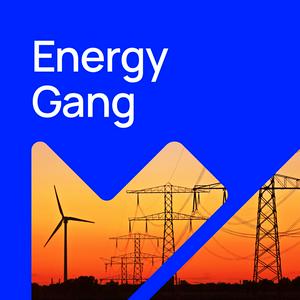
Obtenha o aplicativo gratuito radio.net
- Guardar rádios e podcasts favoritos
- Transmissão via Wi-Fi ou Bluetooth
- Carplay & Android Audo compatìvel
- E ainda mais funções
Obtenha o aplicativo gratuito radio.net
- Guardar rádios e podcasts favoritos
- Transmissão via Wi-Fi ou Bluetooth
- Carplay & Android Audo compatìvel
- E ainda mais funções


Energy Gang
Leia o código,
baixe o aplicativo,
ouça.
baixe o aplicativo,
ouça.
